Politics, witchcraft, and romance abounded on the War Memorial stage as the San Francisco Opera returned to presenting full-length opera to open its 102nd Season on Friday, September 6th, with Giuseppe Verdi’s masterpiece Un ballo in maschera (A Masked Ball), which had not been seen since the previous Music Director, Nicola Luisotti, conducted it a decade ago. Current Music Director Eun Sun Kim led the opera in a new-to-San Francisco production by Italian director Leo Muscato as part of her multi-year journey into both Verdi’s and Richard Wagner’s works.
The show on Friday also had its share of drama. An Opera Ball preceded the opera, where San Francisco luminaries and esteemed guests attended in masquerade attire (I didn’t participate in the Opera Ball), benefitting the SF Opera and SF Opera Guild programs. Before the opera began, a heartfelt thank you video from the SF Opera personnel (including the previous General Director, David Gockley) was shown to celebrate John and Cynthia Gunn – longtime donors and SF Opera patrons – as John Gunn is stepping down as Chairman of the Opera Board (and will be succeeded by Barbara A. Wolfe).
It was followed by Leonard Bernstein’s Candide Overture and The National Anthem, which was performed by the Orchestra and led by Kim. But even more important was the news that The San Francisco Opera Orchestra and its management reached a short-term contract extension agreement “in the moments leading up to the performance” on Friday, as reported in detail here. The news, a welcome bit of levity in a complicated San Francisco arts financial landscape, prompted some audience members that night to shout, “Give them a raise!” in support of the Orchestra during the intermission.
Un ballo in maschera, with its libretto by Italian playwright Antonio Somma, was based on the French playwright Eugene Scribe’s libretto for Daniel Auber‘s successful 1833 grand opera, Gustave III, ou Le bal masque, detailing some aspects of the real-life assassination of Gustav III, King of Sweden by his officer, Jacob Johan Anckarström, at a masked ball (he died thirteen days later). Scribe invented the romance aspects of the opera, including the fictional Amélie, and added the en travesti role of Oscar, the page boy, both of which Somma retained in his. Similarly to his earlier Rigoletto, Verdi faced heavy censorship from local authorities due to its regicide theme, resulting in the opera undergoing multiple transformations throughout its creation, from Gustavo III set in Stockholm to Una vendetta in dominoset in Stettin, and finally Un ballo in maschera in Colonial Boston. In the 20th century, the setting largely reverted to its original 18th-century Stockholm, and SF Opera has used the Stockholm setting since 1977.
Muscato’s staging—a co-production between the Malmö Opera and Theatro dell’Opera di Roma, which premiered at the Teatro dell’Opera di Roma in 2016 and then traveled to Teatro di San Carlo, Naples, in 2019—was decidedly traditional. Federica Parolini’s set design utilized a rotating stage with scenes from the opera placed in four corners. It made for quite efficient scene changes, although the dreaded “Please stay for a brief pause” still occurred for scene changes in Acts I and III (I guess we were all spoiled by Innocence last summer!) to allow the placement of set pieces.
Speaking of those set pieces, Gustavus’ palace in Scene 1 of Act I featured what might be the most extended sofa that ever appeared on a stage, as it stretched almost across the length of the stage. (a little bird told me it also had to be shipped in one piece). Overall, the mostly dark-colored set pieces were effective in portraying palaces and royal residences, although they, too, had some quirkiness; Ulrica’s dwelling resembled an underground dungeon, and beguilingly, the gallows-place for Act II, with its thick fog and ever-changing lighting colors, looked more like a haunted house.

In his Director’s note, Muscato explained that “we imagined a backstory: Gustavus and Renato are best friends. They have known each other since childhood, grew up together, and have always been accomplices. One of them is destined to become king, while the other is destined to be the best of soldiers. When Gustavus ascends the throne, he chooses his best friend as the head of his personal bodyguards.” Costume designer Silvia Aymonino realized this vision by dressing Renato and Gustavus in navy blue costumes. In fact, most people on stage were dressed in earthy colors dominated by blue, black, and grey, contributing to the overall gloominess of the stage (a premonition of the assassination, perhaps?) that lighting designer Alessandro Verazzi had to fight hard to brighten up. Still, there were occasions when the stage felt very dark.
Muscato detailed that in his research, Gustavus organized masquerade balls, including one in black and white à la Truman Capote. Aymonino adopted that principle in dressing for the masked ball, as everyone on stage was decked in haute couture in various shades of black and white, complete with black and white masks and headpieces. Only the six dancers were in colorful costumes dominated by pink, yellow, and green. While the effects were striking, I couldn’t help but wish they were in colorful costumes instead, especially after almost two and ½ hours of gloomy costumes!
Nevertheless, the strength of Muscato’s production lay in how he moved people on stage; this was definitely not a “park and bark” staging. Everybody (and there were 78 in total) moved in a well-choreographed manner, and the principals acted naturally and unforcedly. Of particular interest was the public audience in the opening scene, where Gustavus’ supporters surrounded him with various pictures, and his (militaristic) enemies stood on the sidelines hoping for his demise, resulting in the opera’s beginning like a political tableau. Furthermore, his directions were carried out satisfactorily by a cast with considerable acting abilities, bringing the opera – which many call the peak of Verdi’s “middle period” – to life.
Speaking of the cast, what a splendid ensemble SF Opera assembled for this production! There were no weak singers in the group. Michael Fabiano portrayed Gustavus with a ringing conviction and an effortless tone. Since his debut in 2011, Fabiano seemed to move from strength to strength in his survey of opera’s leading men at War Memorial, and Gustavus found him at his most commanding and, at the same time, most relaxed. There was a sense of playfulness in his portrayal (especially for the “E scherzo od è follia” in Act II) to the point of naivety; here was a King who believed the whole world loved him and nobody would want to harm him. The bright timbre of his voice fully supported that belief further.
Armenian soprano Lianna Haroutounian, an SF favorite, returned to the War Memorial stage as Gustavus’s love interest, Amelia. I felt her voice had become significantly darker since the last time I heard her debut the title role of Manon Lescaut right before the pandemic, and that was an asset here in depicting a lady in turmoil over her feelings for the King. Her great aria “Morrò, ma prima in grazia” – practically a duet with Principal Cellist Evan Kahn – was achingly heartbreaking in the desperation to see her child one last time.
Completing the love triangle as Renato (or Anckarström) was the debuting Mongolian baritone Amartuvshin Enkhbat, and what a mesmerizing house debut it was! With a deep, booming voice and fine acting skills, Enkhbat brought a certain gravitas to the character, making the audience root for him. It was painfully obvious the progression from concern to grief and fury that the role traversed throughout the opera. His “Eri tu” – one of Verdi’s most beautiful arias for baritone – turned into a showstopper and received enthusiastic applause from the audience.
I belong to the camp that thinks Oscar is one of the most annoying characters in opera. Still, on Friday, Mei Gui Zhang made the role much more bearable with her dazzling coloratura and carefree mannerisms. So far, her three roles at War Memorial stage – from frail Dai Yu in 2022 Dream of the Red Chamber to dignified Euridice in the Centennial Season Orfeo ed Euridice, complete with her own dancing – has shown her versatility in embracing various roles and adapting to the demands to each role. I’m looking forward to seeing more roles with her in the future!
Also returning to the stage was Romanian mezzo-soprano Judit Kutasi in the smallish yet scene-stealing role of the fortune-teller Ulrica, following the sensational debut as Ortrud in last year’s Lohengrin. She brought the same brooding intensity to the role with her full round voice, albeit with less menace. Instead, she imbued the role with a degree of caution and weariness (as a person accused of witchcraft!), perfectly aligned with the underground setting of her dwelling.
All other comprimario roles were handled handsomely, especially the “dynamic duo” conspirators Samuel and Tom, outstandingly sung by bass Adam Lau and second-year Adler Fellow Jongwon Han. First-year Adler tenor Samuel Kidd brought a sense of hopefulness and innocence to the role of Cristiano, the sailor that Gustavus granted promotion at Ulrica’s place. The SF Opera Chorus, under the direction of John Keene, once again proved to be a great asset with their intelligent and wholesome singing.
But in my opinion, the night truly belonged to Kim, who led the Orchestra in a reading full of splendor and vigor. She carefully shaped the peaks and the lows and ensured that the singers were never covered while driving the momentum forward. In her hands, the score came alive with passion and tenderness. It was thrilling to hear (and see) the progression of her conducting Verdi and Wagner operas so far, and I can’t wait to listen to her take on my favorite Wagner opera, Tristan und Isolde, next month!
Overall, this was a superb achievement and a thrilling season opener for the San Francisco Opera. Hopefully, they will maintain this level of showmanship for all the productions. There are only six more showings of this glorious performance; you certainly don’t want to miss this! At the very least, don’t miss the livestream on Sunday, September 15, at 2 pm PDT.
Photos: Cory Weaver/SFOpera
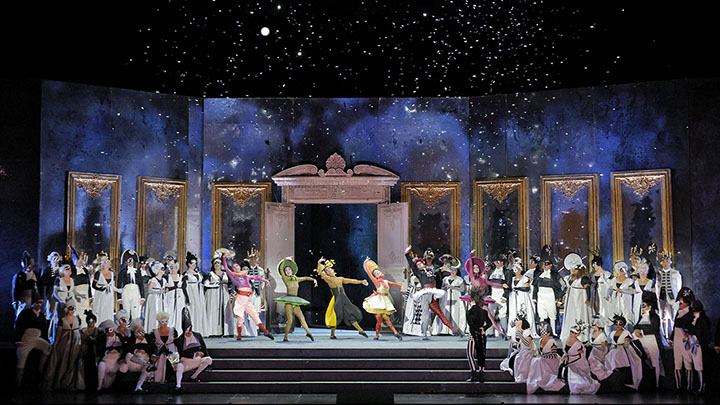
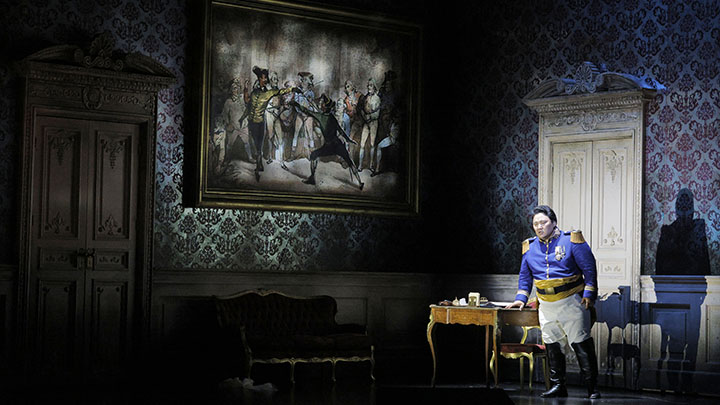

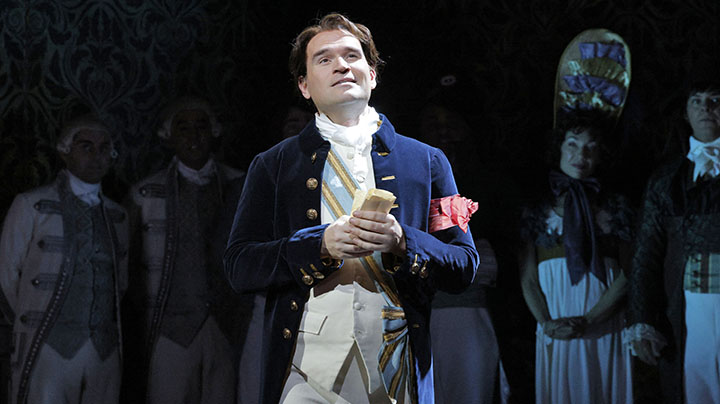
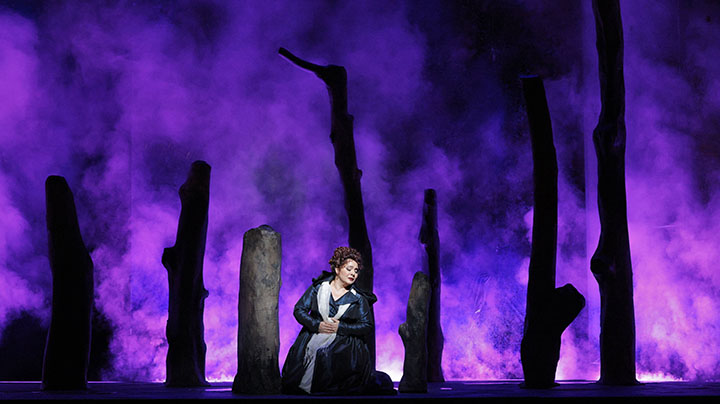
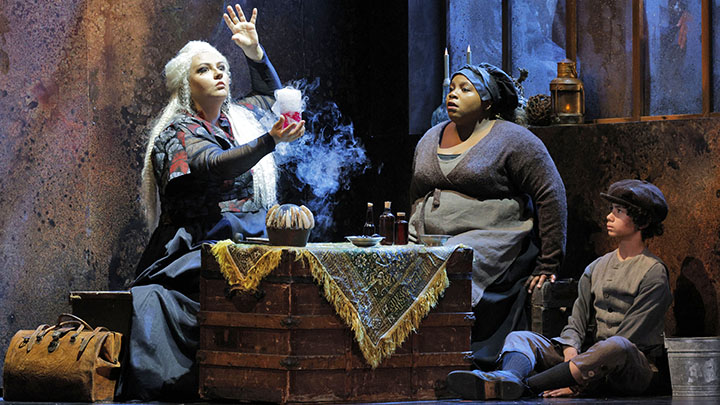

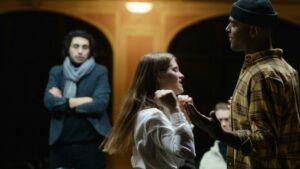
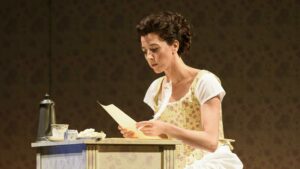

Comments